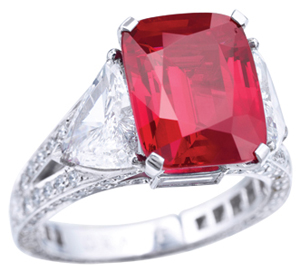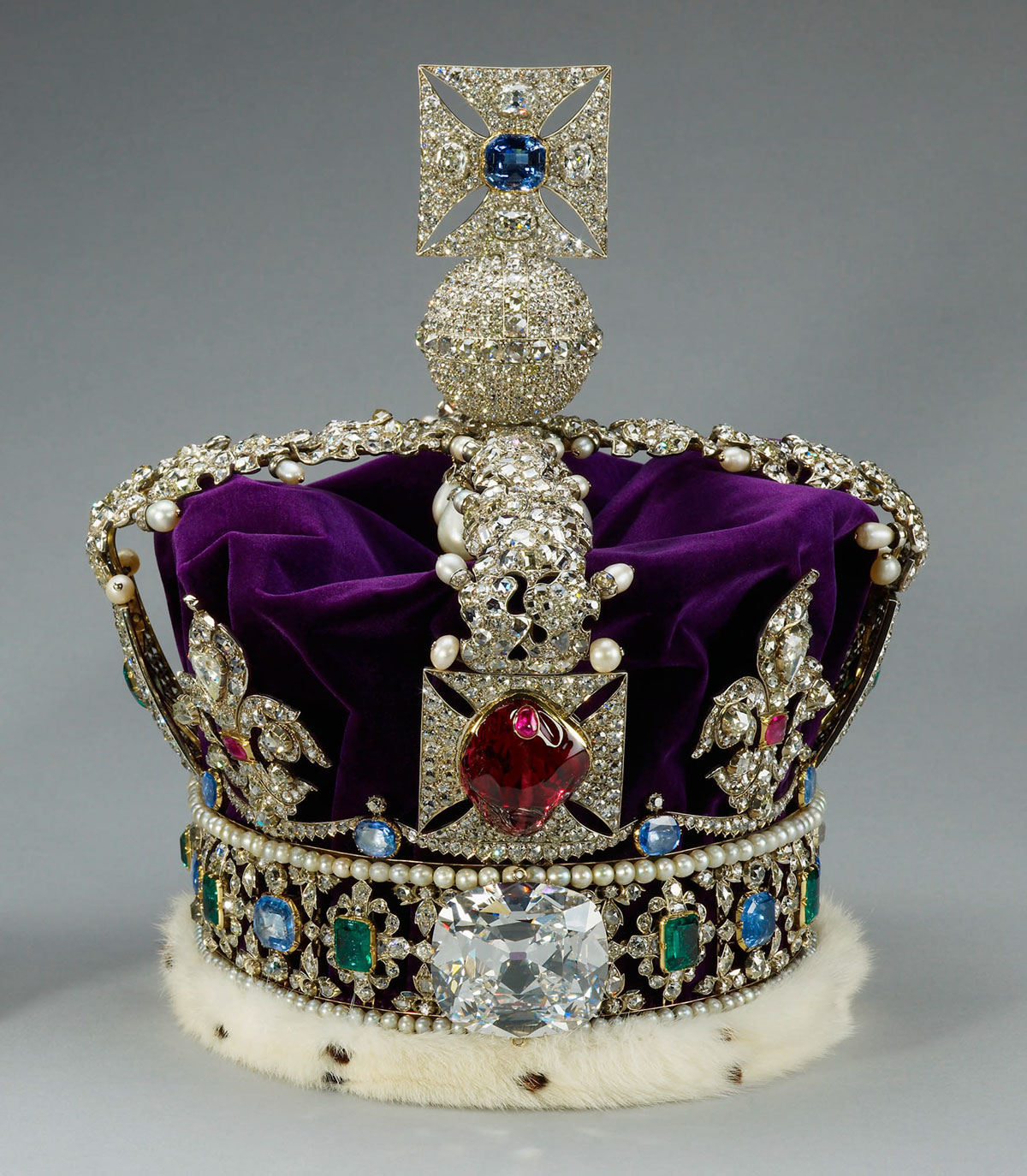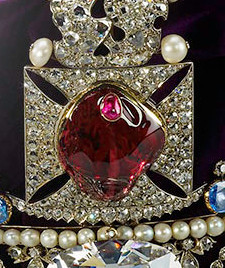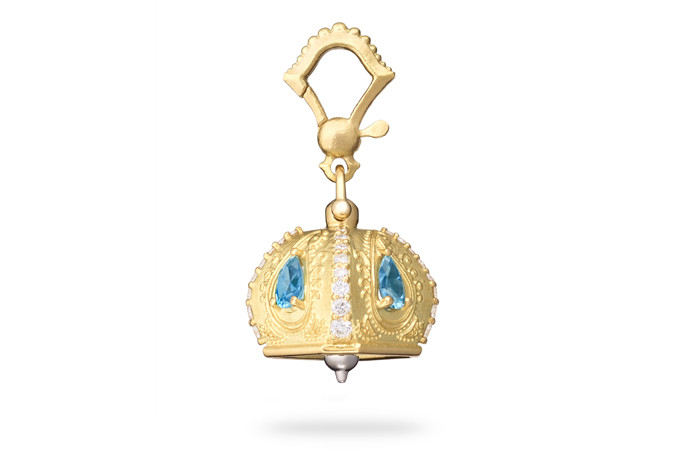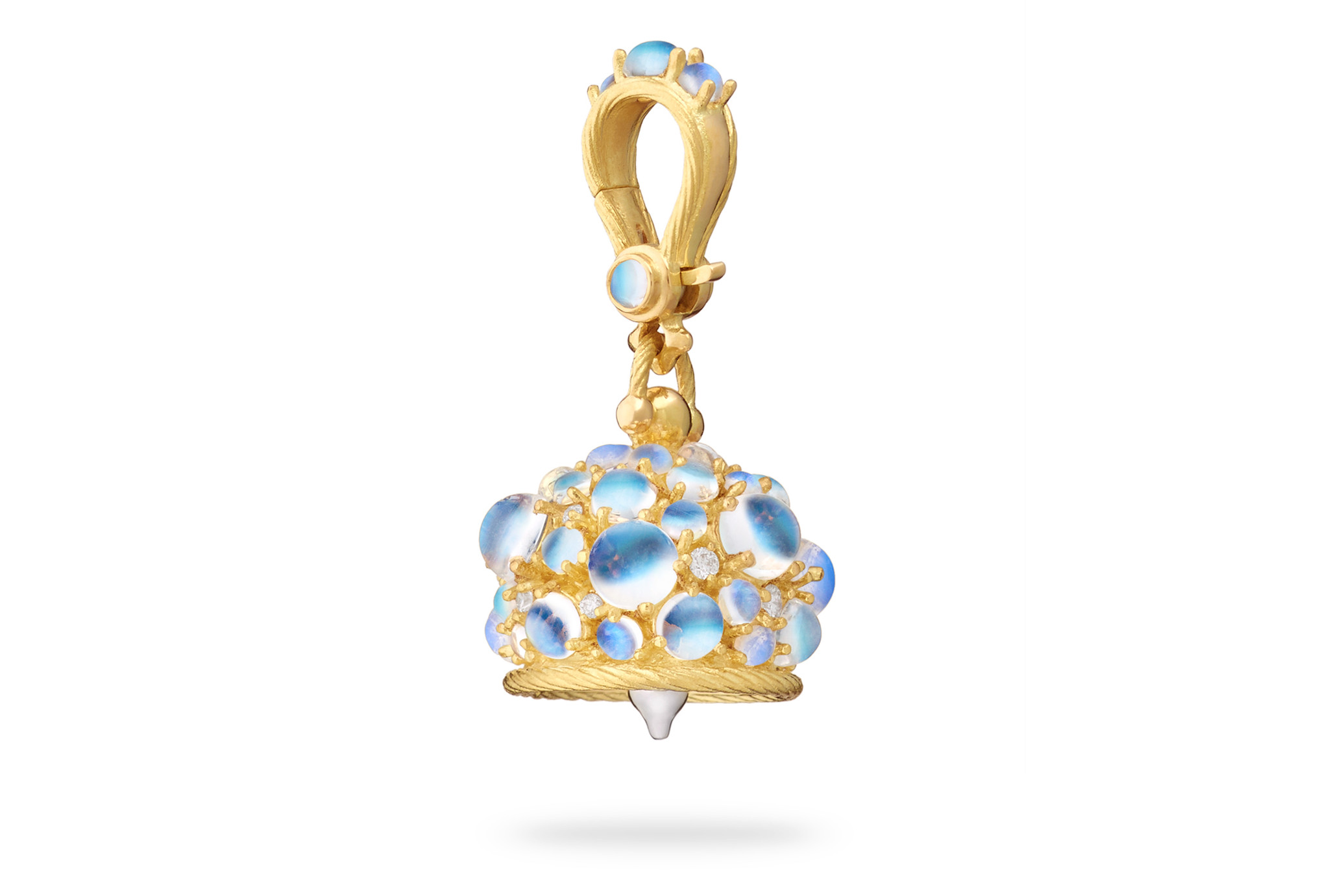July 2016
/Features This Month:
Rough Ruby Crystal, Photo by GIA
Ruby
The Graff Ruby sold by Sothebys in 2014 for $8,600,410.00
The Sanskrit word for ruby is ratnaraj meaning "king of gemstones" and indeed the ruby has lived up to its name by being one of the most coveted gemstones in the world for the majority of recorded human history.
Ruby is the red colored variety of gem quality corundum (any other color of corundum is considered sapphire). Corundum is a crystalline form of aluminium oxide and one of the most durable minerals on earth.
The name ruby comes from the Latin word ruber meaning "red". The most valuable shade of red for rubies is what is called "pigeon-blood red", but rubies can be any shade of red (including purplish, orangy, or brownish). Star rubies may be almost pink in appearance.
“Sunrise Ruby,” untreated pigeon’s blood red-colored sold by Sotheby's
Star Ruby and Diamond Ring by Cartier, sold by Sotheby's
Gemology 101: Asterism
Intersecting rutile needles (called “silk”) in sapphire. Photo by John I. Koivula. GIA (102014)
Asterism is the name that was given to the phenomenon that causes gemstones to exhibit a star-like shape when cut into a cabochon. The optical phenomenon is displayed by some rubies, sapphires, and other gems (i.e. star garnet, star diopside, star spinel, etc.). The Star-effect or "asterism" is caused by the dense inclusions of tiny needlelike crystals of called rutile (also known as "silk"). The stars are caused by the light reflecting from needle-like inclusions of rutile which are aligned perpendicular to the rays of the star. Star gemstones are almost never transparent since rutile is always present in star gemstones.
The Burmese Ruby Tiara
The Burmese Ruby Tiara worn by Queen Elizabeth
Queen Elizabeth II commissioned the tiara from Garrard in 1973. It was constructed using gems she already had on hand: 96 rubies which were a wedding present from the people of Burma and diamonds taken from another wedding present, the Nizam of Hyderabad Tiara.
The tiara is designed to look like a wreath of roses. The roses are separated by rays of diamonds. The rubies are set in gold and the diamonds in silver.
Not What it Seems: The Black Prince Ruby
The Black Prince's Ruby is one of the most famous members of the British Crown jewels, but despite its name, the stone is not a ruby. The Black Prince's Ruby is actually a deep red un-faceted spinel. The stone, which has been in the possession of the British Royal Family since 1367, was named after Edward of Woodstock, Prince of Wales. It is one of the oldest of gems included in the Royal Collection of Crown Jewels and currently sits in the cross at the front of the Imperial State Crown, just above the Lesser Star of Africa (Cullinan II).
At an estimated weight of 170 carats and a length of almost 5 centimeters, the Black Prince's Ruby is the one of the world's largest uncut red spinel gemstones. The Black Prince's Ruby was polished into a bead-like shape which was drilled, strung and worn as a pendant and various other forms of jewelry prior to it being placed in the Imperial Crown. The drill hole has since been plugged with a smaller ruby.
Why was this spinel misidentified as a ruby?
As with many other gemstones 'rubies' were historically a category of gemstones that would have included all red transparent gemstones. It wasn't until 1783 that spinel was differentiated from ruby. Spinel and ruby (corundum) can be distinguished based on its chemical properties and physical characteristics.
Where did the Black Prince Ruby come from?
The Black Prince's Ruby was believed to have been mined in the 14th century somewhere from present-day Tajikistan, which was then known as Badakshan. The stone belonged to Prince Abu Sa'id of the Moorish Kingdom of Granada.
During the mid 14th century the Moorish Kingdom of Granada was being attacked and placed once again under Castilian rule as a part of the Christian Reconquest of the Iberian peninsula. Abū Sa'īd's rule was confronted by that of Peter of Castile, also known as Don Pedro the Cruel. According to historical accounts, Abū Sa'īd wanted to surrender to Don Pedro. Don Pedro welcomed him to Seville. When Abū Sa'īd met with Don Pedro, Don Pedro had Abū Saī'd's servants killed and it is believed that he may have personally stabbed Sa'īd to death himself. It is said that when Don Pedro searched Sa'īd's corpse, the spinel was found and added to Don Pedro's possessions.
In 1366, Don Pedro's illegitimate brother, Henry of Trastámara, revolted against Don Pedro. Don Pedro made an alliance with the Black Prince, the son of Edward III of England in an attempt to thwart the revolt. After the revolt was successfully put down the Black Prince demanded the ruby in exchange for his aid. It is thought that Don Pedro was reluctantly obligated to turn the stone over and the Black Prince took the Ruby back to England.
The Ruby resurfaces again in 1415 when Henry V of England wore a gem-encrusted helmet that included the Black Prince's Ruby during his battle in France. In the Battle of Agincourt on October 25, 1415, the French Duke of Alençon struck Henry on the head with a battleaxe, and Henry nearly lost the helmet, along with his life. The battle was won by Henry's forces and the Black Prince's Ruby was saved. The gemstone was worn into battle once again by Richard III who wore the stone on his helmet at the Battle of Bosworth, where he died.
The Ruby as part of the British Crown Jewels
The 1512 inventory of Henry VIII's posessions mentions "a great balas ruby" set in the Tudor Crown. This is believed to be the Black Prince Ruby. It remained there until the time of Oliver Cromwell in the 17th century, when (excepting of the Coronation Chair and several other items) Cromwell had the principal symbols of the king's power disassembled and sold, while the gold was melted down and made into coins. The fate of the Black Prince's Ruby, during that time in England is not clear, but it came back into the monarchy's posession in 1660 when Charles II and the monarchy was restored. In 1838 Queen Victoria was crowned with a new Imperial State Crown made by Rundell and Bridge. The crown contained 3,093 gems, including the spinel at the front. This crown was remade in 1937 into the current, lighter, crown and a small plaque was placed on the reverse of the gemstone that commemorates the crown's history.
Designer Spotlight
This month's designer spotlight falls on Paul Morelli.
History
The Fine Jewelry House of Paul Morelli was born from a culturally vibrant and artistic family tradition of theatre and handmade costumes. Founded in the early 20th century, in what was then the Philadelphia Theatre District, the Morellis became the premier company across the country for hand made, high quality and one-of-a-kind theatre garments.
In the late 70’s, Paul Morelli, followed his passion for art, intricate detail, fine jewels and metallurgy and transformed the family operation into a fine jewelry business. The Fine Jewelry House of Paul Morelli still operates in the same building where the Morelli family’s artistic roots took hold.
Today the House of Paul Morelli, under creative director Paul Morelli, designs and creates a unique and broad range of luxury fine jewelry from made-to-order, to timeless classics, to signature pieces reflecting current influences.
Under Paul’s discerning eye for detail, pieces continue to be brought to life through collaborative expertise in handcraftmanship and modern technology by teams of craftsmen at the House of Morelli. The Morelli family maintains control over the production of every piece of jewelry, ensuring that each piece meets the family's exacting standards and only then is certified with the Paul Morelli name.
What makes Paul Morelli's Jewelry Special?
SINGLE PEBBLE NECKLACE (SUMMER VERSION) A warm-toned strand of textured, diamond-encrusted and gemstone-set gold evokes pebbles awash on the seashore.
I don't think that it is a stretch to say that there is a lot of jewelry out there that, while gorgeous, looks like it's been cloned. When faced with this sea of identical imagery finding designers that are doing things differently is like breathing a breath of fresh air, Paul Morelli is one of these designers. The jewelry is bright and full of life, while also reflecting the care and the consideration for quality that goes in to every piece. Creativity and a passion for design will leave you wanting more.
CASCADING LAGRANGE PEARL & DIAMOND NECKLACE
Inspired by Joseph-Louis Lagrange, an Italian Enlightenment Era mathematician and astronomer, who developed the mathematical equations used in pave diamond settings as well as the asymmetrical stone settings in this collection.
As always, please feel free to send me any questions or comments via email. And, if you haven't already, be sure to join the daily conversation on Instagram, Twitter, Facebook or Tumblr!
- Kathleen
Visit the Newsletter Archive for past editions

